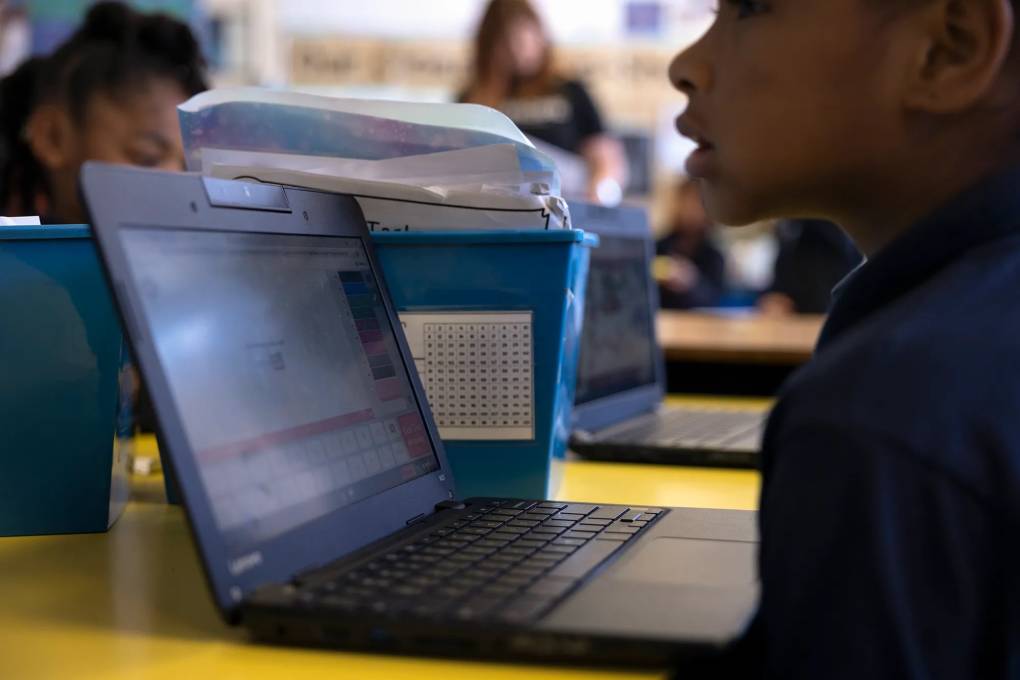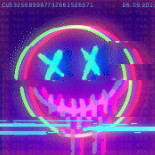Pushing back against the surge of misinformation online, California will now require all K-12 students to learn media literacy skills — such as recognizing fake news and thinking critically about what they encounter on the internet.
Gov. Gavin Newsom last month signed Assembly Bill 873, which requires the state to add media literacy to curriculum frameworks for English language arts, science, math and history-social studies, rolling out gradually beginning next year. Instead of a stand-alone class, the topic will be woven into existing classes and lessons throughout the school year.
I am glad to see this! It is a little late but very welcome and will help future generations significantly. It will be especially interesting to see in the very red counties like Shasta and Kern.
During remote learning, he gave students two articles on the origins of the coronavirus. One was an opinion piece from the New York Post, a tabloid, and the other was from a scientific journal. He asked students which they thought was accurate. More than 90% chose the Post piece.
Fuuuk how could you possibly make that choice when presented with both?!?
Because tabloid trash is written specifically to appeal to casual readers with buzzwords, colourful pictures, and manufactured outrage. Scientific journals are dry and use big words and academic terms. They probably didn’t read past the first two sentences.
I’m not a teacher, but I’ve worked with 14-15 years olds to learn them critical thinking, the scientific principles and about humanism. Not one of them could distinguish between a opnion piece and reporting
And after your teaching them the difference? How many could differentiate then?
I think I’d rather not know the answer.
Well, considering most of the U.S. reads below a 6th grade level and California has the highest population amongst the states… it makes sense these kids chose the source that tells them what to think.
Scientific journals have fun jargon words that make parsing certain sentences impossible without either knowledge of that field, or taking the time to look them up. That step right there is too much for many people, I think.
But wouldn’t the reasonable conclusion at least be “wow these are big words and it says scientists wrote it; must be more trustworthy”
Correct.
Counter-question: how does one develop the ability to reason through information they don’t understand if they don’t read? Where would that skill develop?
New York my boy. New York knows all the things. Unlike science, which cant even do god just a little bit.
That’s a really interesting article. I appreciate that it digs into techniques for spotting misinformation.
I really hope it’s not the same kind of critical thinking that some other states pushed.
Missouri’s version was to assign a controversial and biased news article and the students had to write an essay agreeing with the article while citing that same article. Outside sources were not allowed and neither was disagreeing with the article. Anything but full agreement resulted in a 0% and put marks against the school since it was state assessment.
I mean that’s not a bad thing, either. Being capable of understanding an opinion you don’t agree with is incredibly important and very lacking.
The problem was it forced you to agree with that opinion. There was no thinking involved, only blind belief
Critical thinking would allow you to understand opposing opinions while respectfully disagreeing
There was no thinking involved
I actually wholeheartedly disagree. It’s easy to spout off your own beliefs, it’s harder to justify one you don’t already agree with. Critical thinking here would require you to understand where the article is coming from rather than writing it off entirely because you start from a position of not agreeing.
Understanding an opinion while not agreeing with it is incredibly important. If you don’t understand a topic well enough to advocate for the devil, then you don’t understand it enough to have a conversation at all.
This is literally what critical thinking is. It’s not “justify a position you already agree with.”
I disagree. You are only allowed to agree with the article using the articles own statements. If article states the sky was always red without mentioning anything else, then you’d have to agree or fail.
No other views, facts, opinions, perspectives, etc was allowed.
That is not critical thinking.
That was how Missouri taught “critical thinking”
If you brought in dissenting opinions, then… That would just be a lesson on disproving articles, not actually learning how to understand opposing opinions.
It’s an example of critical reading, not critical thinking. Reading isn’t thinking, they are different, that’s why they mostly have different letters in them
I doubt you’ll change my mind on this, but feel free to keep trying
You aren’t just reading it. You’re writing an entire-ass paper on the subject which would require actually understanding where the article is coming from in order to further extrapolate its opinion, otherwise you’d just be rewriting the article in its entirety which doesn’t seem to be the goal of the assignment.
It is the mark of an educated mind to be able to entertain a thought without accepting it
I don’t love that we’re using the term “fake news” which felt popularized by Donald Trump and used as an autoresponse to media he didn’t like, rather than a label for poorly sourced or biased media. That said, super happy to see that this education is happening and hopefully we have a new generation of kids growing up that feel more equipped to use their critical thinking skills when navigating the vast world of information being thrown at them!
Trump didn’t make it up; he just repopularized an old NAZI tactic.
The above poster isn’t saying that Trump made up ‘fake news,’ they are pointing out that the overuse of ‘fake news’ has become fatiguing to many people. We hear ‘fake news’ and we don’t have a visceral negative reaction to it as we should, it’s just something we roll our eyes at now because hearing it over and over again has desensitized us.
Another recent comparable would be the word ‘enshittification’ which, while apt, already seems like a tired expression that also somehow underscores the severity of the phenomenon it is describing.
I hesitate to call it dyslexia, but I had to read the title 3 times before I read it correctly, I thought it said “California Schools Will Require Students to Learn to Fake IDs”
same, I’ve seen the post 3 times today, though it said “to fake ids” every time
Glad I wasn’t the only one. I was like what is wrong with me. At least if there is something wrong I am not alone.
Removed by mod
“Identifying fake news? More like leftist indoctrination!” —the guy you went to high school with who would snort crushed candy for a dollar and has never been more than 100 miles from the parking lot he was conceived in
That is oddly specific.
A 2022 Pew Research Center survey found that adults under age 30 are nearly as likely to believe information on social media as they are from national news outlets
I knew it was bad, but Jesus Christ that’s very bad
I feel like that\s more an indictment of how bad the national news outlets have become.
What did they consider a national news outlet? There are some that pretend to be news but really aren’t. If included, I’m not sure how useful the survey is. Picking the “right” choice could still mean they get bad info.
I’m 40 and can say that describes me. But I’d also say that’s talking shit unless you really understand the truth and you throw in “never” behind “believe” and discard any care about where any of it comes from.
“True or False: A CIA analyst’s guide to spotting fake news” this is funny because: https://m.youtube.com/watch?v=aemyhNJUAzQ
I learned something along these lines in English class one day with fiction, the news was based on old newspapers or whatever. It would be good to update that to current news design patterns.
I mean this is great if it merely focuses on spotting misinformation as a whole. Our whole lives we are inundated with misinformation from advertisers, politicians, news, etc. However, I do worry that those in charge of such a program will end up using it for the wrong purposes. Like when real estate investors pour billions into studies against working from home, or when the pharma-industry sees loses from weed or psilocybin.
‘But who decides what’s fake news?!,’ insist people who think reality is based on ‘who decides.’
People in power, similar to hate speech
Pictured: the oblivious problem.
Pictured: Someone who cannot imagine the people in power pushing narratives they disagree with.
‘These people are demonstrably lying.’
‘Oh, so you can’t imagine being lied to?’
Wrong.
You decide, that’s the point. Its learning to identify fake news, eg by confirming the citations and researching the origin source of the information.
In California everything from the extreme right will be fake news
On Earth everything from the extreme right is fake news. Fascists lie. Calling them on it is not bias; it’s reality.









